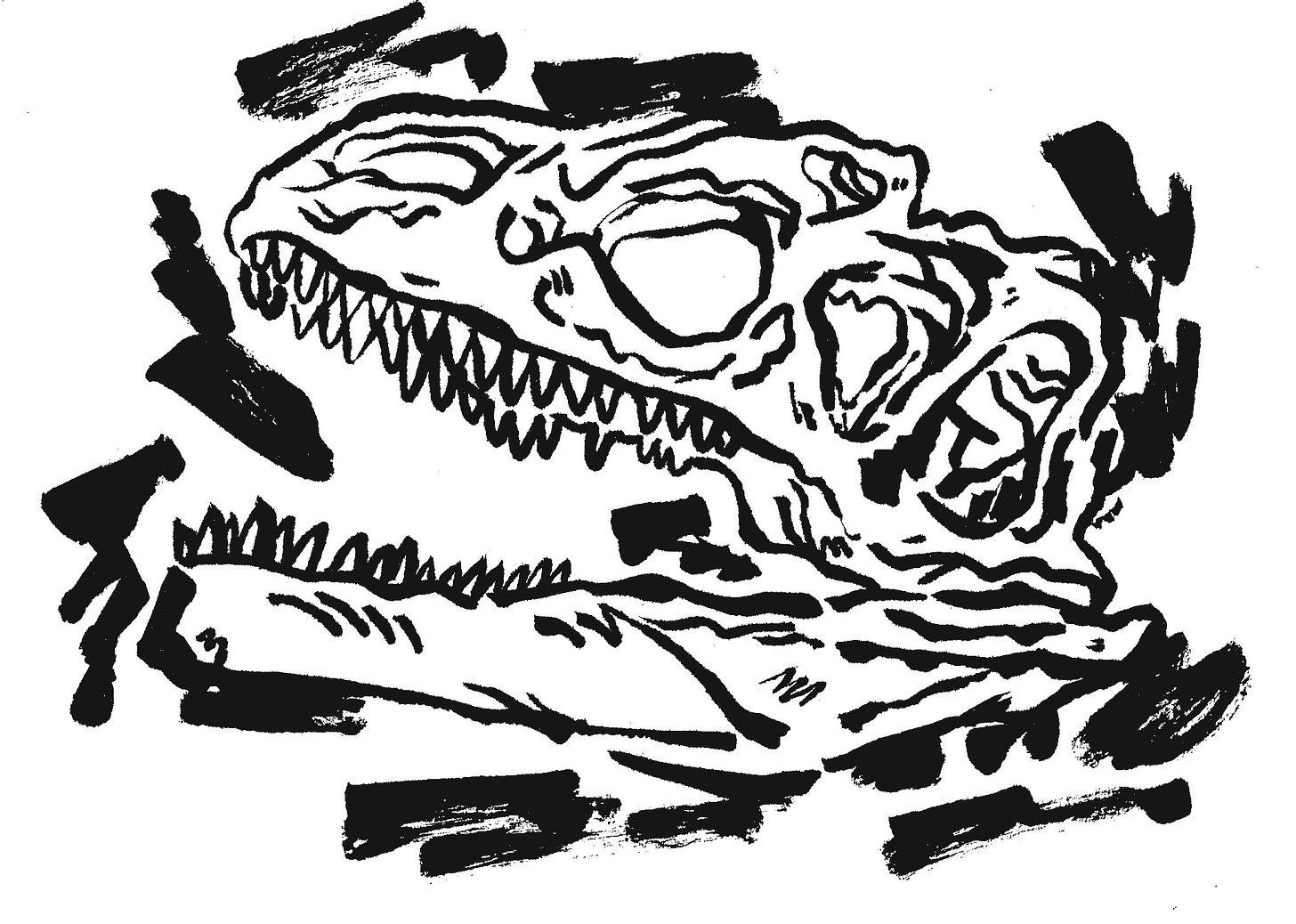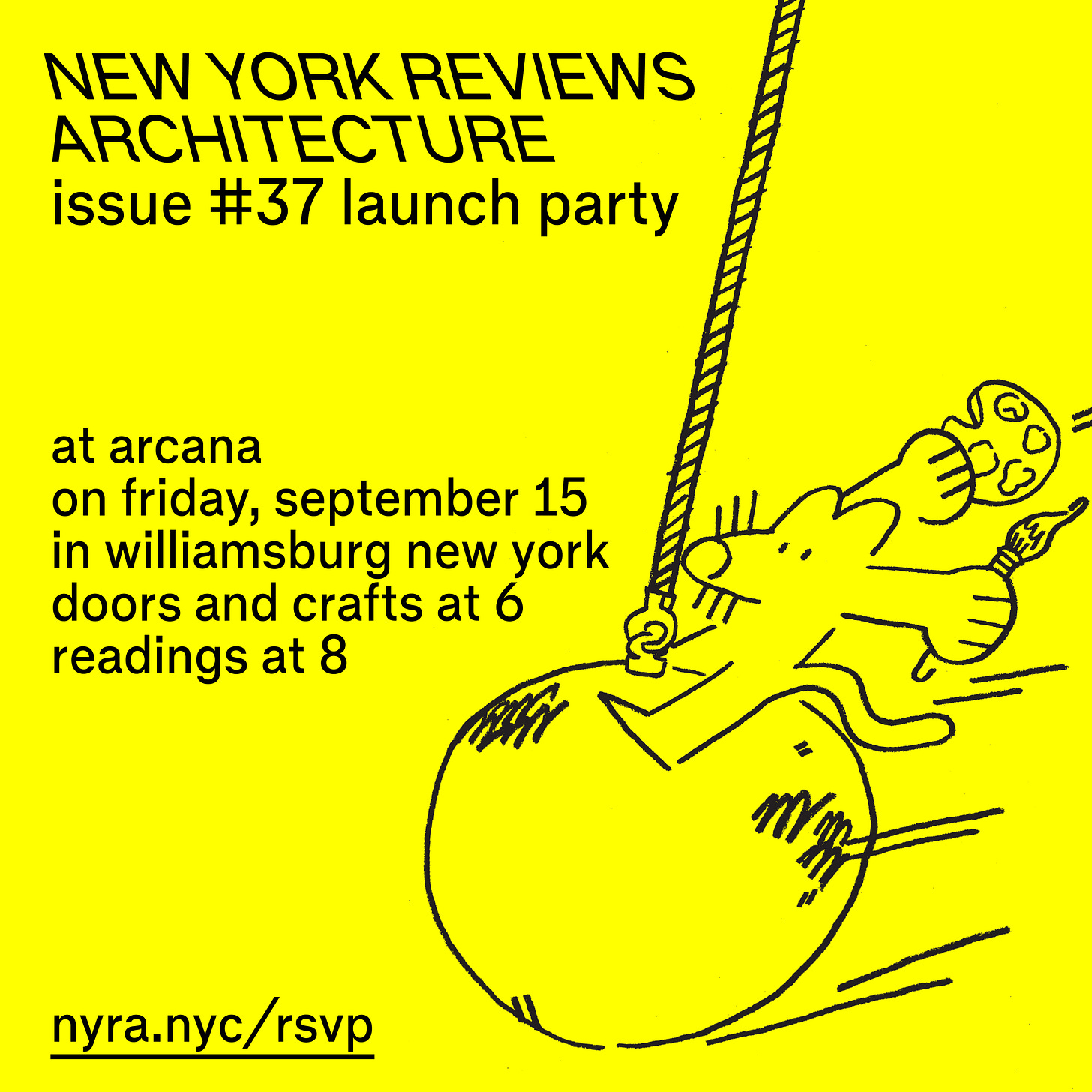What Should a City Museum Do?
A critical examination of the American Museum of Natural History’s new wing
We’ve just wrapped our next issue! Come celebrate with us on Friday.
Hunting and Gathering
Notes on the American museum, the natural, and history
When I visited the museum for a press preview, Jeanne Gang sat with me under the lamellae-like fins of the mushroomy column in the new reading room, and we looked together at her portfolio of powerful and meaningful drawings. The first was the most spectacular. But the last was the best. The first was a provocative and poignant collage of an engraving of a box canyon facing into a photograph of Manhattan-henge, that pseudosolstice day in which the sun sets exactly along the angle of the Manhattan gridiron and so seems to promise a better alignment between nature and culture than we have so far managed on Spaceship Earth. The last drawing was a color-coded map of the carefully calibrated adjustments made to the positioning and relative densities of rebar mesh and cementitious material in different zones of the shotcrete shell. This diagram shows how, for all its visual appeal and inviting readability, the striking geometry is for far more than looks. The seemingly baroque compound curves are actually a kind of engineering minimalism: they can enable new structural lines of force to travel around new volumes of space, down to find old and preexisting foundations. This is the architectural equivalent of regenerative agriculture, of no-till gardening, that leaves the subterranean mycosphere to work its will. This deeper repurposing of preexisting structures, this radical resourcefulness about the generative and adaptive reuse of the still-present past—this is the architecture of the future.
Taxonomy-Free
If there’s a correct path through American Museum of Natural History, it’s totally elusive.
If there weren’t consistent signage or banners advertising the new(ish) Hall of Gems in the current westernmost wing of the museum, there would be almost no way of realizing that all of these discrete elements are part of the same structure. Ask people what they think of the museum, and they’ll invariably reach for an affective description rather than a physical one: memories of childhood visits, long conversations through meandering halls with past lovers, the theatrical impact of a single diorama, or an uncomfortable feeling about a problematic depiction. In everyone’s favorite indie film about divorce in Park Slope, The Squid and the Whale, the museum serves primarily as a coming-of-age symbol. In Night at the Museum, the interior is something entirely different than what it actually is, a fiction imagined on a soundstage in Los Angeles.
There’s something about the place that resists taxonomizing. It is not immediately apparent how a museum of natural history, ostensibly concerned with systematically cataloging the logic of the natural world, could be so illogical in its physical form. A brief look at the history of its development suggests that while cohesion might have been an early goal, it was quickly abandoned.
Come hang out with us.
We are having a party, this Friday, at 6pm at Arcana in Williamsburg. There will be free food, reasonably priced drinks, and at least one architect in attendance. There might even be a new issue. We will be building a table together, live, then there will be readings, and then, at 10pm, there is actually another group that is orchestrating a rave (information here about that). Register here: nyra.nyc/rsvp
Expansion Pack
It turns out that hill towns aren’t made all at once or by one person.
by Fred Scharmen
Like the reflective pop star who peaked in their mid-twenties (remember all that hair?), Moshe Safdie can’t keep from returning to Habitat 67. Recently, he teamed up with a video-game company to realize the original project, which was significantly larger than what got built.
New York Review of Architecture reviews architecture in New York. Our editor is Samuel Medina, our deputy editor is Marianela D’Aprile, and our publisher is Nicolas Kemper.
To pitch us an article or ask us a question, write to us at: editor@nyra.nyc.
For their support, we would like to thank the Graham Foundation and our issue sponsors, Tod Williams Billie Tsien Architects and Thomas Phifer.
To support our contributors and receive NYRA by post, subscribe here.







